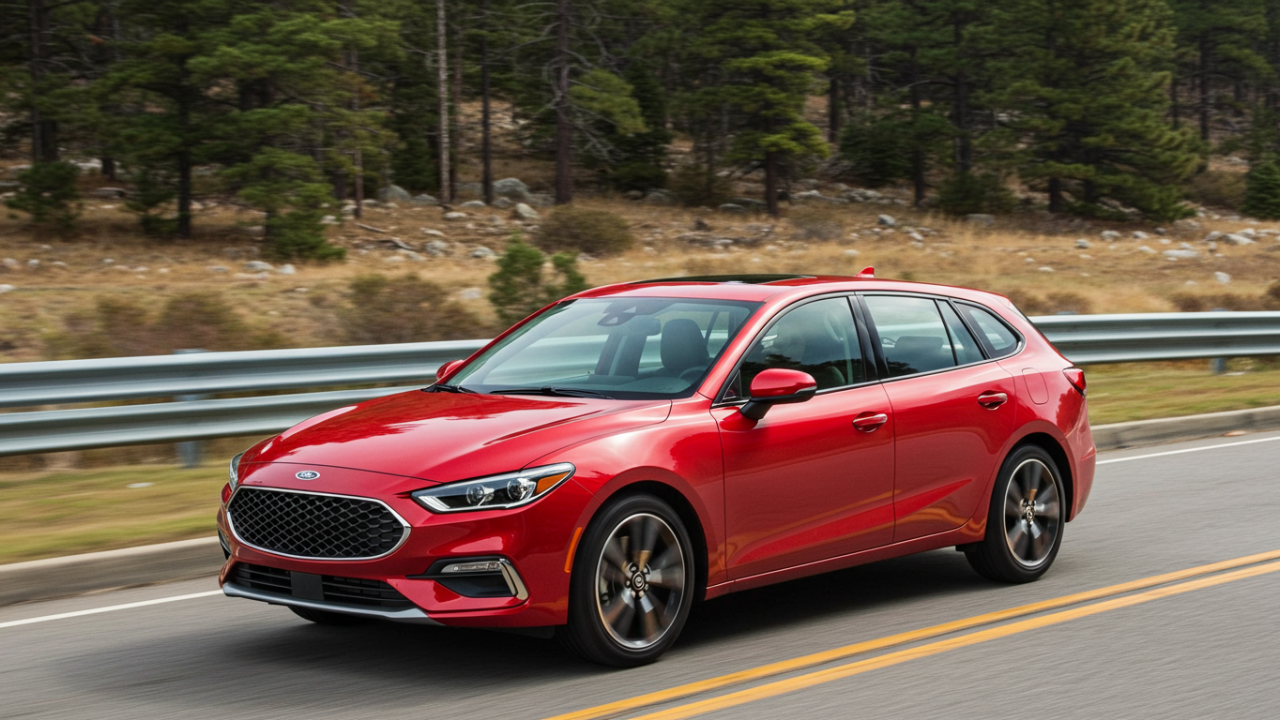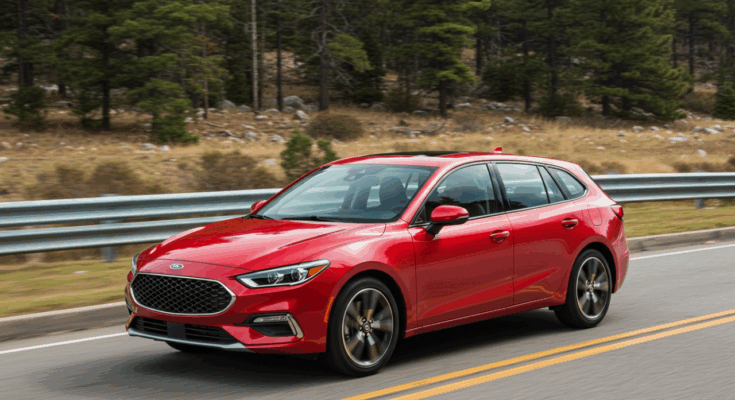In the grind of daily commutes—whether it’s battling rush-hour traffic, navigating suburban sprawl, or enduring long highway slogs—affordable hatchbacks offer a smart, no-frills solution. These compact vehicles combine nimble handling for city streets, ample cargo flexibility thanks to their liftback designs, and fuel efficiency that keeps gas station visits minimal. In 2025, with rising fuel costs and a push toward economical driving, hatchbacks under $30,000 are gaining traction for budget-savvy drivers who want reliability without the bulk of an SUV. They’re perfect for solo commuters, small families, or anyone prioritizing low ownership costs over flashy features.
This article puts five standout 2025 affordable hatchbacks under the microscope: the Mitsubishi Mirage for bare-bones efficiency, the Toyota Corolla Hatchback for balanced reliability, the Honda Civic Hatchback for modern tech, the Mazda3 Hatchback for driving engagement, and the Subaru Impreza for all-weather confidence. We’ll evaluate their commute-friendly attributes like fuel economy, comfort, safety, and practicality, answering common queries such as “How do they handle stop-and-go traffic?” and “What’s the real cost of ownership?” With detailed specs, pros/cons, and actionable tips—like optimizing tire pressure for better mpg or choosing trims for your route—you’ll gain clear insights to decide if a hatchback fits your daily drive. Let’s shift into gear and explore.
The Appeal of Affordable Hatchbacks for Everyday Drives
Affordable hatchbacks shine in 2025 by delivering big on efficiency and versatility without breaking the bank. Most boast 30+ mpg combined, slashing annual fuel costs by $300-500 compared to trucks or crossovers. Their compact footprints (typically 170-180 inches long) make parking a breeze in urban lots, while fold-flat rear seats expand cargo from 15-20 cubic feet to over 50 for weekend errands. Safety tech like automatic emergency braking and blind-spot monitoring is standard, earning many five-star NHTSA ratings.
Commuters often wonder: “Are they comfortable for 30-60 minute drives?” Yes—supportive seats and quiet cabins (noise levels under 70 dB at 70 mph) reduce fatigue. Reliability is key; brands like Toyota and Honda top J.D. Power dependability charts. Drawbacks? Limited towing (under 1,500 pounds) and tighter rear space for tall passengers. For commutes averaging 15,000 miles yearly, these hatchbacks excel in cost savings and ease.
Ultra-Budget Efficiency: Mitsubishi Mirage
Overview and Commute Performance
The 2025 Mitsubishi Mirage starts at around $18,000, making it the ultimate entry-level commuter. Its 1.2-liter three-cylinder engine produces 78 horsepower and 74 lb-ft of torque, paired with a CVT for smooth, if unhurried, acceleration—0-60 mph in about 12 seconds. Fuel economy leads the pack at 36 city/43 highway/39 combined mpg, yielding a 400-mile range on a 9.2-gallon tank.
In daily drives, the Mirage’s light 2,000-pound curb weight makes it agile in traffic, with a tight turning radius for U-turns. Highway merging requires planning due to modest power, but cruise control holds steady at 70 mph.
Key Features for Commuters
A 7-inch touchscreen with Apple CarPlay keeps navigation hands-free, while forward collision warning adds safety. Cargo space offers 17.1 cubic feet behind the seats, expanding to 47 for groceries or luggage. Rear legroom (34 inches) suits short adults or kids.
Pros, Cons, and Insights
Pros: Exceptional mpg saves $600 yearly on fuel; low insurance ($900 average). Cons: Basic interior; engine buzz at high rpm. It’s a fuel saver for short, solo commutes.
Actionable Advice
For urban drivers, enable Eco mode to boost mpg by 5%. Budget $300 annually for maintenance—oil changes every 7,500 miles ($50). Add all-season tires ($400 set) for wet roads; the Mirage’s warranty covers 5 years/60,000 miles. If your commute exceeds 50 miles, test for wind noise.
Reliable All-Rounder: Toyota Corolla Hatchback
Overview and Commute Performance
Priced from $24,600, the 2025 Toyota Corolla Hatchback balances affordability with pep. The 2.0-liter four-cylinder delivers 169 horsepower and 151 lb-ft of torque through a CVT, hitting 60 mph in 8.0 seconds. Expect 32 city/41 highway/35 combined mpg for a 450-mile range.
It handles commutes with responsive steering for lane changes and a compliant suspension that absorbs potholes without drama.
Key Features for Commuters
An 8-inch touchscreen with wireless Android Auto, adaptive cruise control, and lane tracing assist ease highway stints. Cargo: 17.8 cubic feet, up to 23 folded—ideal for work bags. Rear space (29.9 inches legroom) fits two comfortably.
Pros, Cons, and Insights
Pros: Legendary reliability; strong resale (70% after three years). Cons: CVT drone; limited rear headroom. Great for mixed city/highway routes.

Actionable Advice
Choose the SE trim ($25,500) for better audio. Maintenance: $350/year; use Toyota’s app for service alerts. Inflate tires to 35 psi for 2-3 mpg gains. For rainy commutes, the AWD option ($1,500) adds traction without mpg penalties.
Tech-Savvy Choice: Honda Civic Hatchback
Overview and Commute Performance
Starting at $28,545, the 2025 Honda Civic Hatchback offers hybrid efficiency in an affordable package. The hybrid variant (around $29,000) combines a 2.0-liter engine with electric motors for 200 horsepower, achieving 50 city/47 highway/49 combined mpg. Acceleration to 60 mph takes 7.0 seconds, with seamless EV mode for quiet starts.
It’s refined for commutes, with minimal body roll and quick response in traffic.
Key Features for Commuters
A 9-inch touchscreen, wireless charging, and Honda Sensing (including traffic jam assist) reduce stress. Cargo: 24.5 cubic feet, 34 folded. Rear legroom (37.4 inches) accommodates families.
Pros, Cons, and Insights
Pros: Hybrid mpg saves $500/year; fun-to-drive chassis. Cons: Higher upfront cost; hybrid battery space cuts trunk slightly. Ideal for eco-conscious commuters.
Actionable Advice
Go hybrid if charging is available—regenerative braking adds range in stop-go. Maintenance: $400/year; check belts every 30,000 miles ($100). Use Normal mode for balance; HondaLink app optimizes routes for efficiency.
Engaging Driver: Mazda3 Hatchback
Overview and Commute Performance
The 2025 Mazda3 Hatchback begins at $25,000, emphasizing sporty dynamics. Its 2.5-liter engine outputs 191 horsepower and 186 lb-ft, with a six-speed automatic reaching 60 mph in 7.5 seconds. Fuel economy: 27 city/35 highway/30 combined mpg.
G-Vectoring Control enhances cornering, making twisty commutes enjoyable.
Key Features for Commuters
An 8.8-inch infotainment with rotary dial, blind-spot monitoring, and adaptive headlights. Cargo: 20.1 cubic feet, 47.1 folded. Rear legroom (35.1 inches) is adequate.
Pros, Cons, and Insights
Pros: Engaging steering; premium interior feel. Cons: Firmer ride; lower mpg than rivals. Suits drivers who hate boring commutes.
Actionable Advice
Select AWD ($1,400) for snow; it drops mpg by 2. Maintenance: $450/year; rotate tires every 5,000 miles ($40). Add a dash cam ($100) for urban safety; Mazda’s i-Activsense alerts prevent fender-benders.
All-Weather Warrior: Subaru Impreza
Overview and Commute Performance
At $24,000, the 2025 Subaru Impreza stands out with standard AWD. The base 2.0-liter boxer engine makes 152 horsepower and 145 lb-ft, with a CVT for 27 city/34 highway/30 combined mpg. RS trim ($28,000) ups to 182 hp.
Symmetrical AWD grips in rain or snow, stabilizing highway drives.
Key Features for Commuters
An 11.6-inch touchscreen, EyeSight safety suite with automatic braking. Cargo: 20.4 cubic feet, 56 folded—class-leading. Rear legroom (36.5 inches) fits three.
Pros, Cons, and Insights
Pros: AWD confidence; spacious hatch. Cons: Thirsty in city; CVT lag. Perfect for variable weather commutes.
Actionable Advice
RS for more power on ramps. Maintenance: $500/year; flush AWD fluid every 30,000 miles ($150). Use winter tires ($500 set) for sub-zero temps; Subaru’s Starlink connects for remote start.
Side-by-Side Comparison
| Model | Starting Price | Horsepower | MPG (Combined) | Cargo (cu ft, folded) | Key Commute Perk |
|---|---|---|---|---|---|
| Mitsubishi Mirage | $18,000 | 78 | 39 | 47 | Ultra-low fuel costs |
| Toyota Corolla Hatch | $24,600 | 169 | 35 | 23 | Reliability king |
| Honda Civic Hatch | $28,545 | 200 (hybrid) | 49 | 34 | Hybrid efficiency |
| Mazda3 Hatchback | $25,000 | 191 | 30 | 47.1 | Driving fun |
| Subaru Impreza | $24,000 | 152 | 30 | 56 | Standard AWD |
The Mirage wins on price/mpg, Civic on efficiency, Impreza on space/traction. For 20-mile commutes, Mirage or Civic; longer, Corolla or Mazda.
Practical Tips for Hatchback Commuting
Fuel Optimization: Maintain 32-35 psi tires; clean air filters yearly ($20) for 1-2 mpg gains. Comfort Hacks: Add seat cushions ($30) for long sits; use apps like Waze for traffic avoidance. Safety Upgrades: Install rearview mirrors ($50) if needed; check brakes every 20,000 miles ($200). Ownership Costs: Expect $300-500/year maintenance; insurance $900-1,200. Lease for $250/month if upgrading soon. Buying Advice: Test drive in rush hour; negotiate $500 off MSRP. Hybrids qualify for $7,500 credits if eligible.
Affordable hatchbacks in 2025 prove commuting doesn’t have to be costly or dull—they’re efficient, capable partners for the road ahead.
FAQ
What’s the best hatchback for city-only commutes?
The Mitsubishi Mirage—its high mpg and small size excel in traffic and parking.
How do hatchbacks compare to sedans for fuel economy?
Hatchbacks often match or exceed sedans (30-40 mpg) with added cargo versatility.
Are 2025 hatchbacks safe for highway commutes?
Yes, with standard aids like lane assist earning top ratings; add adaptive cruise for ease.
What’s the average maintenance cost?
$300-500/year; hybrids like Civic may cost slightly more for battery checks.
Can hatchbacks handle family commutes?
Models like Impreza or Civic fit two kids with car seats; check LATCH points.



